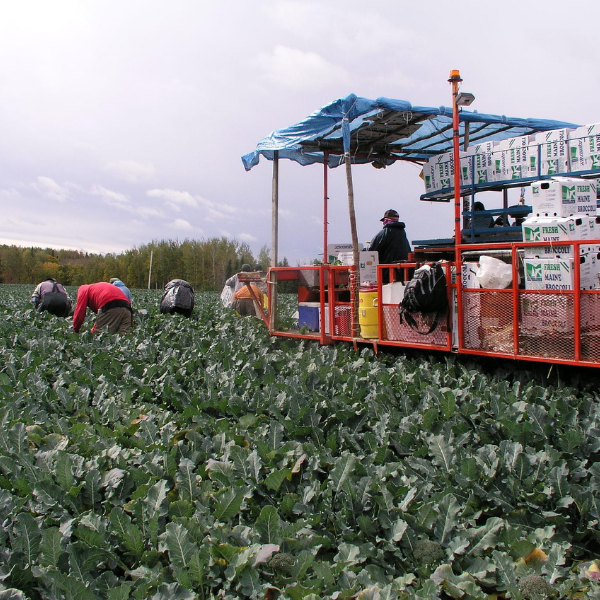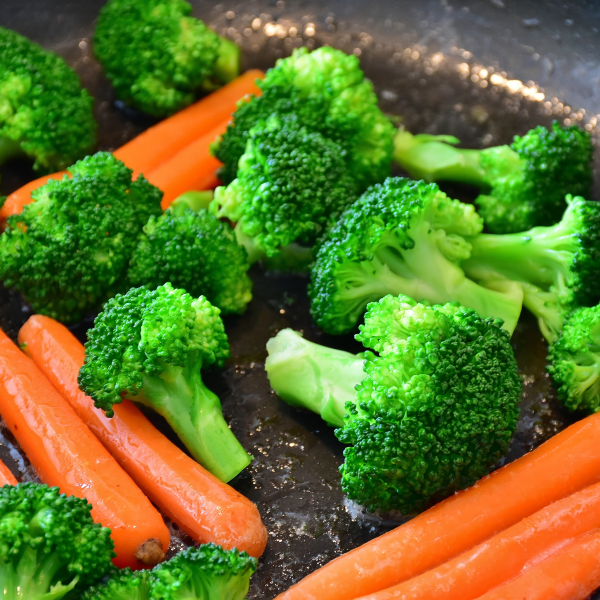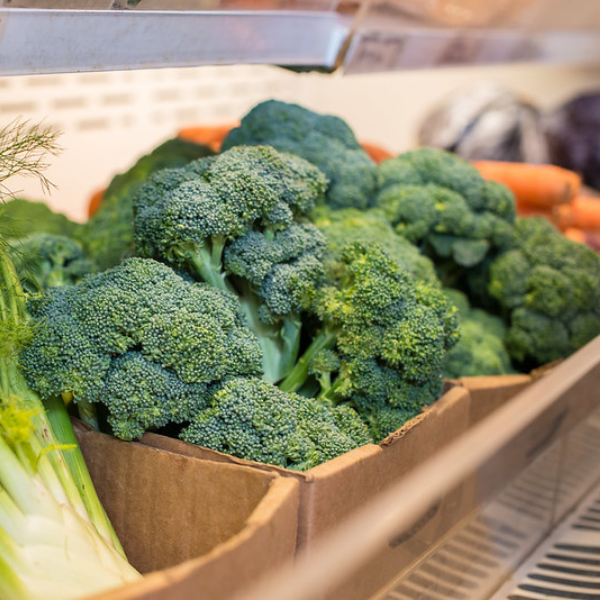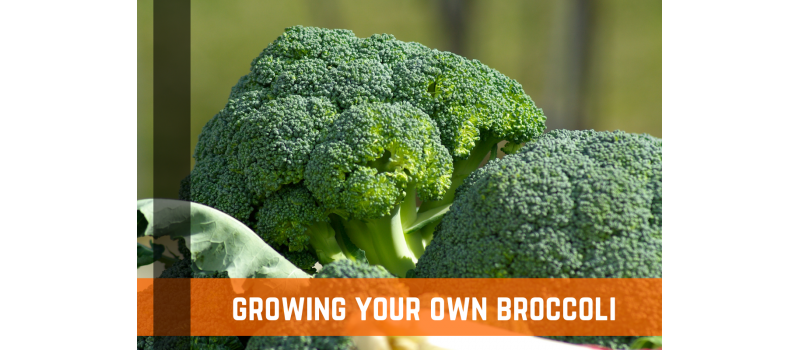Broccoli is a tough vegetable that thrives in the cooler months of the year. In most sections of the country, two crops per year (spring and fall) are conceivable, thanks to ongoing improvements in quick maturity and heat tolerance, which extends the life of broccoli through all except the warmest periods of the season.
Broccoli is a nutrient-dense vegetable that can be prepared in numerous ways. It can be eaten raw, mildly sautéed, or added to stir fries, soups, pasta, and rice-based dishes. Growing broccoli is also not difficult if you follow a few simple guidelines.
When To Plant Broccoli
Broccoli is a cool-season crop, so plant it in the early to mid-spring for an early summer yield, or in the mid to late summer for a fall crop. Because high temperatures will impair the development of the broccoli plant, the goal is to have broccoli mature before or after the projected high temperatures.
Broccoli seeds can germinate in soil temperatures as low as 40°F, but warmer soil is preferable and will hasten development. Broccoli can be started indoors or outdoors a few weeks before the final spring frost date for spring planting.
When planting broccoli seeds, it is best to:
- Start seeds indoors 6 to 8 weeks before your last frost date.
- Sow seeds outdoors 2 to 3 weeks before your last frost date, or as soon as the soil can be worked in the spring.
- Sow seeds outside 85 to 100 days before the first fall frost, when soil and ambient temperatures are high, for fall plantings.

Planting Broccoli - Soil, Sunlight, and Water
Broccoli thrives in cool weather, ample sun, plenty of water, and nutrient-rich soil. Plant your broccoli in a location that receives at least 6 hours of direct sunlight each day and has healthy, well-drained, moist soil rich with organic content.
For optimal growth and to avoid clubroot disease, the soil pH should be between 6.0 and 7.0. Follow these steps to set your broccoli plants up for success:
- Sow seeds 1/2 inch deep and 3 inches apart if beginning seeds outside.
- Thin seedlings when they reach a height of 2 to 3 inches, spacing them 12 to 20 inches apart.
- Plant transplants that are 4 to 6 weeks old outside in holes somewhat deeper than their container depth, 12 to 20 inches apart, if you began seeds indoors.
- Space rows of broccoli 3 feet apart to allow for ample growth.
- After planting, water your broccoli seeds and bed very well to promote growth.
Broccoli Pests, Diseases, and Solutions
You may encounter various pests and plants diseases that can harm your broccoli plant from growing. The following is a list of common problems and solutions:
- Aphids - Symptons of aphid pests include curled yellow leaves, distorted flowers, and black mold. To combat aphids, simply put banana or orange peels around the plant and gently spray your broccoli plant with water to knock them off.
- Cabbage Loopers - You may have a cabbage looper infestation if you notice large holes in leaves, defoliation, or stunted growth. Cabbage loopers can be handpicked off your broccoli plant or spray with a natural pesticide.
- Cabbageworms - Cabbageworms leave large holes and you may also notice yellowish eggs laid on leaves. Cabbageworms need to be handpicked off of your broccoli plant to get rid of them.
- Clubroot - Clubroot is a common problem in broccoli plants. Your plants leave's will appear yellow and the roots will be swollen. Unfortunately, you will need to dig up and destroy the affected plants. Ensure that your soil maintains a PH of about 7.2 to combat and prevent clubroot.
- Nitrogren Deficiency - If your broccoli plant is nitrogen deficient, the bottom leaves will turn yellow and slowly continue towards the top of your plant. Supplement your broccoli plant with a high nitrogen fertilizer to combat this.
There are more plant diseases and pests that can negatively affect your broccoli plant, but these are the most common issues. It is important to inspect your broccoli plant daily to ensure that these problems are not present. Keep any dogs or pets away from your broccoli.

Broccoli Growing Tips
If you're growing broccoli seedlings inside, make sure they get plenty of light to avoid getting lanky. If the seedlings develop lengthy stems, repot them deeper and then supply additional light.
If the seedlings develop lengthy stems, repot them deeper and then supply additional light. Before planting spring seedlings in the garden, wait until the weather is frost-free. Make sure to harden off broccoli seedlings by gradually exposing them to direct sunshine and wind.
Broccoli thrives under direct sunlight. Select a garden location that receives at least 6 to 8 hours of direct sunshine every day. To promote consistent development, cultivate broccoli in organic, rich soil and nourish seedlings and early transplants. Too much nitrogen stimulates excessive leaf growth, so use a balanced fertilizer.
Because broccoli grows best in damp, but not soggy soil, water it frequently. Mulch to keep weeds at bay and soil moisture levels stable. Plant broccoli in an area of the garden where you haven't cultivated cabbage crops for four years to avoid disease and pests.
Harvesting and Storing Your Broccoli Plant
The unopened bloom of the broccoli plant is the portion that can be eaten. Harvest the center head when it's completely matured but before the individual buds emerge into little golden flowers. A 4 to 7 inch tight head with big, packed blossom buds is a sign that broccoli is ready to harvest.
Harvest as soon as the buds begin to open. It's too late to pluck a plant that has flowered. Remove the center flower head with a sharp knife to harvest. Leaving the broccoli plant in the ground fosters the development of side flower heads. These lateral flower heads, albeit smaller than the core head, allow gardeners to gather broccoli for extended periods of time.
Fresh-picked broccoli heads should be harvested in the cool morning hours and refrigerated as soon as possible to protect their freshness. Broccoli heads that have not been washed can be kept in the refrigerator for 3 to 5 days. Frozen broccoli can last for up to 1 year.

Conclusion
And there you have it! A complete guide on how to grow broccoli. Simply follow the steps & advice listed above and you will be on the way to your first broccoli harvest.
Growing your own vegetables can be a rewarding and nutritious experience. Knowing that your broccoli is free of pesticides and herbicides can give you peace of mind knowing that you aren't eating anything unhealthy. Good luck and have fun growing!

